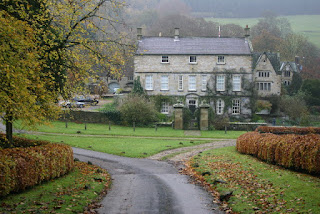One of the most overlooked momentous events in history is the dissolution of the monasteries and the pilgrimage of grace. The events of these years overturned life in England forever.
By the sixteenth century monastic foundations that had begun as humble institutions devoted to the world of God, had lost sight of their simple beginnings. By the time of the dissolution, these abbeys had become immensely rich and in some cases, were no stranger to corruption.
Even the Cistercians, who were an offshot from the mainstream monastic way and intended to adhere more closely to the rule of St Benedict, had embraced the extravagance of stained glass, patterned floor tiles and multitudinous chapels. Throughout the monastic world the regulations laid down by St Benedict were breached. But it was difficult to avoid.
By way of securing themselves a place in Heaven, laymen endowed the abbeys with lavish gifts of land, chapels, windows etc. They paid a high sum to ensure prayers would be read for their souls for all eternity. Ultimately, the wealth of the monasteries outstripped that of the crown and it was their affluence that drew the greedy eye of Cromwell and his king.
 |
| Hans Holbein [Public domain], via Wikimedia Commons |
The accusations of corruption laid against the abbeys, although probably true in some cases, had less to do with outrage and more to do with justifying the plundering of the holy church.
Cromwell’s campaign to close the monasteries began slowly at first. Picking up where his old master, Wolsely, had left off, he began tentatively chipping away at smaller, less profitable foundations or houses where moral decay had become the rule rather than the exception. But once Henry gave Thomas Cromwell his head, the abbeys fell one by one, monks and nuns were turned out, some abbots were tortured and executed.
Abbey treasures went straight into the king’s coffers, the lands became the property of the crown, leased to the king’s favourites by way of securing both their loyalty and ensuring their support for the dissolution of the monasteries. By 1540 the largest abbeys were gone, the lands distributed among the nobilty, and the remains of once glorious buildings subjected to neglect and decay.
 |
| Young nun digging a grave — Wikipedia |
The dissolution was almost universally resented by monks and traditionalists. Monasteries were a life-line; common people relied on them from birth to death for charity, employment and for healthcare. The closures united the populace both rich and poor, culminating in widespread protest that posed the biggest threat to the crown during Henry VIII’s reign.
 |
| Richard Croft / Lincolnshire Rising plaque |
The first rising took place in Lincolnshire in October but was quickly put down, only to spring up again in Yorkshire when the people of the north, led by lawyer, Robert Aske, embarked upon what came to be known as a ‘Pilgrimage of Grace’.
Gentry as well as commonfolk joined the peaceful march to persuade the king to change his mind; monks and laymen, nuns and children were among those who took to the road to preserve their way of life. The Pilgrimage of Grace was the worst uprising during Henry VIII’s reign, the rebels reaching more than 30,000, far outnumbering the royal army but after initially agreeing to consider their complaints, the king managed to get the upper hand.
He ‘invited’ Robert Aske to spend Christmas at court, promising to consider the rebel's requests but when unrest broke out again in the East Riding, the king had the excuse he needed. The Duke of Norfolk was sent to deal with the rebels. The leaders were executed, and as a deterrent to future protests, there were widespread hangings of common people. Robert Aske was hung in chains on the walls of York and left to die.
When I wrote my book Sisters of Arden I concentrated on one small priory, Arden in Yorkshire.
 |
| Arden Hall on the site of the priory. Uncredited / Arden Hall via Wikimedia |
Arden Priory was founded in 1150 by Peter de Hoton, confirmed by Roger de Mowbray between 1147 and 1169. It was never a rich foundation. One can only imagine the misery of a life of unceasing labour, meagre accomodation, glassless windows, fasting, overworked and ill-clad. In 1397, long before the dissolution, there were just six nuns at Arden: Christina and Elizabeth Darrel, Elizabeth Slayne, Alicia Barnard Agnes of Middleton, and Elizabeth of Thronton. They were overseen by the Prioress, who is named simply as Eleanor. At this time it seems relations between the nuns was not good. The sisters accused the prioress of pawning the church silver, selling wood without consent and providing so few candles in the quire that there was insufficient light to say the offices. They also complained the buildings were in a state of disrepair. But this doesn’t necessarily suggest the prioress was corrupt, it rather points to dire need. Janet Burton in her book Monasteries and Society in the British Isles in the Late Middle Ages says:
“What emerges from their complaints is that this small community of seven women, living in the bleak environment of the North Yorkshire Moors, was suffering conditions of extreme poverty and hardship. It was life on the edge.”
Being so far from the ‘concourse of men’ there few rich benefactors, the priory would have had little chance of increasing their wealth. If there was such a degree of poverty in the fourteenth century, what was the financial state by the time of the dissolution? ‘Valor Ecclesiasticus’ (a survey of church finances in England, Wales and parts of Ireland made in 1535 on Henry VIII’s orders) suggests that very little had changed. Poverty was aways the rule at Arden.
The priory was visited by the king’s commissioners on 8th May 1536 and it was suppressed the following August. At the time of dissolution there were just six sisters, three of whom received pensions of twenty shillings each, two of ten shillings and one six shillings and eightpence. Sister Elizabeth Johnson, who was an octgenarian with limited hearing was granted forty shillings ‘toward her sustenance.’ The church ‘treasure’ seized by the king’s men consisted of a gilt challice weighing 14.5 oz and a flat piece of white silver weighing 8oz, and two bells valued at ten shillings. According to the ‘Valor Ecclesiasticus’ the value of the house in 1536 was £12. 0s and 6d. It is noted that the nuns also had an image of St Brigid to whom they made offerings for cows that were ill or had strayed.
This points to a reality quite different from tales that were circulated in 1536 of corruption and ungodliness. Motivated by his favour of the new learning Cromwell and his men put forward stories of nuns indulging in sexual misconduct with monks, murdering their own infants, enjoying lewd and promiscuous lives. Even if they had the inclination, I would be surprised if the nuns of Arden found either the time or the energy for such practices.
Arden Priory has remained unchanged for almost four hundred years. When a nameless child is abandoned at the gatehouse door, the nuns take her in and raise her as one of their own.
After the execution of Anne Boleyn in 1536, the embittered King strikes out, and unprecedented change sweeps across the country. The bells of the great abbeys fall silent, the church fragments and the very foundation of the realm begins to crack.
Determined to preserve their way of life, Margery and the sisters of Arden join a pilgrimage thirty thousand strong and attempt to lead the heretic king back to grace.
Sisters of Arden is a story of valour, virtue and veritas.
Five star Amazon Review - 'The Sisters of Arden draw us into the lives of nuns and the orphaned lay sister Marjory, who have been eking out an impoverished existence at the isolated nunnery of Arden on the Yorkshire Moors until Henry VIII’s break with Rome brings the King’s (and Cromwell's) Men to close the place, wreck the buildings and force the nuns out, to find shelter elsewhere.
This is an era casually discussed in history books as a moment of change but, for those living through it, it was an traumatising overturning of centuries of tradition, belief and understanding. Religion, the basis of all security in the life to come, was torn apart and the dissolution of the monasteries deprived the country of the nearest thing it had to social welfare. The old, the sick, the handicapped, the orphaned, the destitute were now abandoned and desperate. Many, determined to turn the King back from this overthrow of all they had known, banded together in the Pilgrimage of Grace, hoping by force of numbers to turn the clock back. Their attempt was inevitably doomed and retribution was sickeningly brutal. That brutality is captured in Sisters of Arden, but so too is the exhausting daily struggle against cold and starvation, and the hopes and fears of ordinary bewildered people. An excellent read.'























